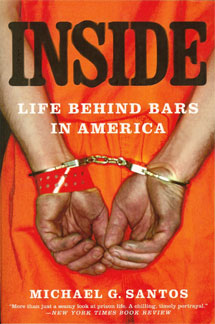Prison Reforms Should Include Parole
When I began serving my sentence, in 1987, a parole system was in place. Tough-on-crime legislators abolished the use of parole in the federal system, and such decisions contributed to a surge in the federal prison population. Whereas fewer than 40,000 people were locked in federal prisons when I began my term, today we have more than 200,000 people serving time in federal prison.
Under the parole system, most offenders would serve one-third of their sentences inside of prison boundaries. After completing that third, the parole-eligible offenders would have an opportunity to submit a request for review from the parole board. If the members of the parole board deemed the offender a candidate for success upon release, the board had the discretion to release the offender on condition that he abide by all laws and live as a contributing citizen. Those offenders who received parole consideration would serve the final two-thirds of their sentences in the community under the supervision of a parole officer.
With parole eligibility, offenders had tangible reasons to work toward success upon release. An individual who had been saddled with a 15-year term, for example, could focus on preparing himself in ways that might persuade the members of the parole board that he was a good candidate for release. Providing that inmate with a goal to work toward, the inmate would avoid activities that could lead to disciplinary problems. The inmate might strive to educate himself or develop certification in vocational trades. An inmate striving to advance his candidacy for parole would strive to build stronger ties in society, perhaps even establish a solid release plan. Parole eligibility would give those in the inmate population hope.
Besides benefiting each individual inmate, returning the parole board through prison reform legislation would benefit administrators who are charged with managing prisons. With inmates serving lengthy sentences, and minimal opportunities to advance their release dates, administrators struggle to motivate offenders to prepare for law-abiding lives upon release. Prisoners who serve lengthy sentences feel a marked disconnect from society. Instead of focusing on steps they may take to prepare for the challenges and obstacles they will confront upon release, long-term prisoners lose themselves in the institution. They engage in prison hustles. They participate in gangs. They lull themselves into a stupor with recreational activities, television, and table games. If they could work toward consideration for release on parole, many more inmates would adjust to confinement in productive ways.
Encouraging parole eligibility through appropriate prison reforms would make society safer through reduced recidivism rates. Statistics show that more than six in every ten prisoners return to confinement upon their release. Those high recidivism rates reflect the failed public policy of long-term imprisonment. The longer society exposes an individual to “corrections,” the less likely that individual becomes to function in society as a law abiding citizen. Indeed, long-term imprisonment works against the interests of society. It destroys families; it lessens an individual’s chance of securing meaningful and sustainable employment; it alienates offenders further from the values that hold society together.
Prison reforms that return parole eligibility to the federal system would save taxpayers billions of dollars that currently are being wasted to fund this bloated system that perpetuates a cycle of failure. In the Second Chance Act of 2007, Congress made the finding that “expenditures on corrections alone increased from $9 billion in 1982 to $60 billion in 2002.” The implementation of a federal parole system through appropriate prison reforms would significantly reduce those wasted funds.
In my article titled Eighteen Year Old Receives Ten Year Sentence, I provide an example of the perfect candidate for parole consideration. Rito Garcia began serving his sentence a few weeks after he became an adult. Wanting to change his life, he worked toward educating himself. He earned his GED and an associate’s degree while simultaneously keeping a clean disciplinary record. After completing one-third of his sentence, Rita was as ready as he ever would be for success upon release. Yet rather than encouraging other prisoners to follow Rito’s example by releasing him on parole, current tough-on-crime laws required that Rito serve his ten-year term in its entirety.
When hard work goes unrewarded, and when administrators extinguish hope, failure proliferates. Prison reforms that return parole and that encourage offenders to work toward earning their freedom, on the other hand, will serve the interests of all Americans. In our enlightened society, we should extend the opportunity for redemption and reconciliation to all; we should purge the vengeance and divisiveness that has contaminated this system for far too long.










